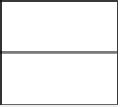Biology Reference
In-Depth Information
Another aspect of cross reactivity is interfering substances. Interfering substances refers
to factors present in the sample that may inhibit or in other ways impact a test result. In the
case of subjects in a trial or patients in a clinical setting, an example could be some medica-
tion that they are currently on or it could be something in the sample preservation. A few
examples of interfering substances would be paraffin in a formalin-fixed paraffin-embedded
(FFPE) tissue, or the presence of steroid in an inflammatory disease patient. Substances such
as these will need to be artificially spiked in to assess the impact of these substances on the
assay performance as well as to demonstrate they do not affect the ultimate device call.
7.4.3.10 Assay Conditions
The specific conditions under which the assay is performed should also be defined and
specified as part of validation. This is a separate set of specifications from those defined for the
sample and refers to the cycling conditions, instrument read settings etc. utilized to generate
results for the companion diagnostic assay. In addition to stating the conditions at which the
assay is to operate, there should be instrument calibration and monitoring to ensure compli-
ance with the stated assay conditions. Much of this information is included in the clearance of
the device, but should be demonstrated for each assay applied to that particular platform.
7.4.3.11 Sample Carryover
The possibility of sample must be addressed. Sample carryover refers not only to the
carryover of sample from assay wells, but also to the possibility of the instrument detec-
tion carryover from well to well. Studies must be designed with specific markers so
that any carryover can be detected by assay specificity. For sample carryover from well
to well, instrument calibration and certification information should contain information
Assay Assay Bssay Cssay Dssay E
Target A
Target B
Target C
Target D
Target E
Areas of nonspecificity
Target specific signal
FIGURE 7.8
A diagram depicting a standard cross reactivity study, by which each assay is tested against each
target to ensure no cross reactivity of one assay with any of the other analytes.







Search WWH ::

Custom Search